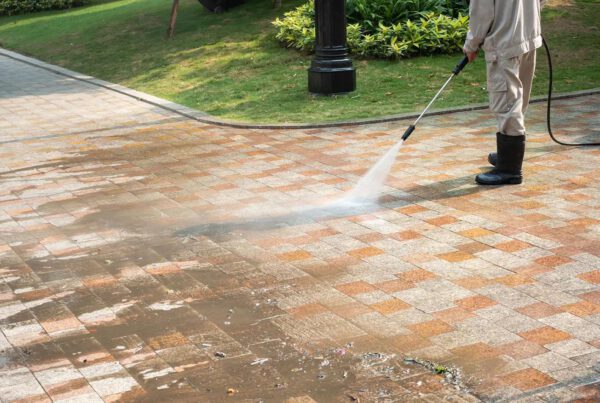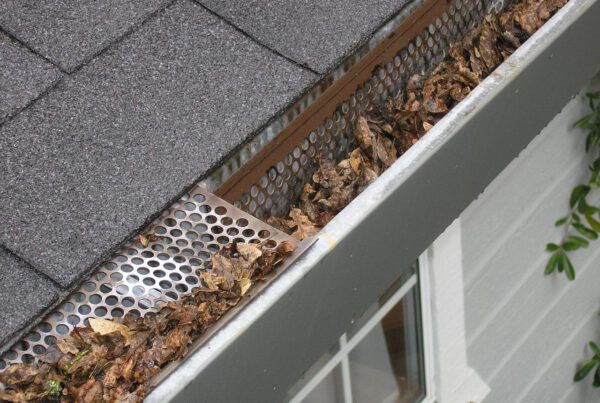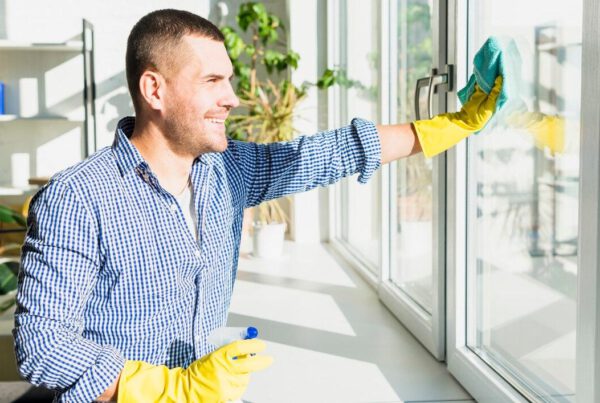Have you ever looked up at your roof and noticed those puzzling dark streaks? It is a common sight but it can leave you wondering the reasons behind it. Let’s figure out the mystery of those black streaks on roofs and explore how to remove them effectively.
Understanding The Black Streaks On Your Roof
Dark streaks on your roof can be quite a common sight, often caused by algae growth. A type of common algae known as “black algae” thrives on moisture and can spread across roofs, creating those unsightly streaks. These algae spores are carried by the wind and can settle on your roof, where they start to multiply and form black streaks over time. Let’s explore effective methods to remove these black streaks from your roof and restore its appearance.
Common Causes Of Roof Streaks
Here are some common causes of roof streaks:
Algae Growth
Algae, such as black algae (Gloeocapsa magma), thrive in wet conditions and can create dark streaks on roofs. If these streaks are left unattended, they could become unsightly and have the potential to harm the roof as time goes on.
Moss Formation
Moss tends to grow in shady and moist areas on roofs, contributing to streak development. When moss piles up, it can trap water and speed up how quickly your roof wears down.
Lichen Buildup
Lichens, a combination of algae and fungus, can also form on roofs, causing streaks. Dealing with lichen growth quickly is crucial to keep the roof looking good and structurally sound.
Dirt And Debris Accumulation
Accumulated dirt and debris on roofs can add to streak formation over time. Regularly cleaning and maintaining your roof can stop dirt and debris from building up, keeping your roof clean and lasting longer. If you take care of water drainage and trim branches over the roof, you can lower the dirt buildup, reducing the chance of streaks forming.
Impact Of Black Streaks On Roof Health
Black streaks on a roof can harm it in different ways:
- The streaks on the roof make it look unsightly.
- The streaks, by causing water retention, quicken the breakdown of the roof materials.
- Algae can break down the shingles, leading to the roof aging more quickly and reducing its overall lifespan.
Prevention Methods
To prevent black streaks caused by algae on your roof, you can follow these simple steps:
- Shade and moisture can promote algae growth. Trim trees and branches near the roof to reduce shade and moisture, which can promote algae growth.
- Install zinc or copper strips near the roof ridge to prevent algae growth. When it rains, these metals release substances that prevent the growth of algae and moss.
- Ensure proper ventilation in the attic to reduce humidity levels, as high humidity can contribute to the growth of algae on the roof.
Regularly implementing these prevention methods can help safeguard your roof against the formation of black streaks caused by algae.
How to Remove Black Streaks on Roof?
To effectively remove black streaks caused by algae on your roof, you can follow these steps:
- Mix equal parts of water and bleach in a spray bottle.
- Spray the solution on the affected areas of the roof and let it sit for about 15-20 minutes.
- Gently scrub the area with a soft-bristle brush to remove the algae stains.
- Rinse the roof thoroughly with water to remove the cleaning solution.
Regularly following these steps for algae removal on your roof can help maintain its cleanliness and appearance.
Professional VS. DIY Solutions
When it comes to dealing with black streaks on your roof, you have the option of choosing between professional and DIY solutions.
- DIY solutions, like using a water and bleach mixture for roof cleaning can be cost-effective but may require more time and effort and might not yield desired results if not done correctly.
- Hiring a professional roofing expert ensures thorough and successful removal of algae, as they have the expertise, proper equipment and can safely and effectively eliminate the streaks.
- Choosing professionals might cost more, but it saves you time and effort in the end.
Ultimately, the choice between DIY and Professional help depends on your confidence, available time, budget and the severity of the algae issue on your roof.
FAQs
1) What Causes Black Streaks On Roofs?
Black streaks on roofs are typically caused by algae growth, specifically Gloeocapsa magma, which thrives in warm and humid environments.
2) Can Black Streaks On Roofs Damage The Roof?
Yes, algae-caused black streaks can shorten the life of the roof by retaining moisture and speeding up the breakdown of the roof’s material.
3) What Are Some DIY Methods To Remove Black Streaks From A Roof?
DIY methods include using a mixture of water and bleach, scrubbing the affected areas and rinsing the roof thoroughly.
4) How Often Should I Clean My Roof To Prevent Black Streaks?
It is recommended to clean your roof at least once a year to prevent the buildup of algae and maintain the roof’s appearance and health.
5) Can Algae On The Roof Affect The Energy Efficiency Of The House?
Yes, algae on the roof can reduce energy efficiency by absorbing heat and increasing the temperature in the attic, leading to higher cooling costs.
6) Can Algae On The Roof Affect The Resale Value Of The House?
Yes, the presence of black streaks on the roof can impact the curb appeal and resale value of the house, as it may give the impression of poor maintenance.
Conclusion
The black streaks on your roof are often a result of the growth of algae, especially Gloeocapsa magma. This algae likes wet places and can spread, causing ugly marks on your roof. It’s super important to deal with this problem quickly to stop more damage and keep your roof in good shape. Regular cleaning and maintenance can help combat algae growth and preserve the longevity of your roof.




